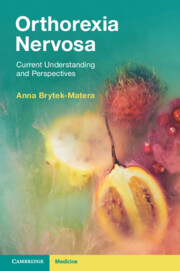Orthorexia nervosa has recently been defined as excessive preoccupation with healthy eating, causing significant nutritional deficiencies and social and personal impairments. The ORTO-15 is the most widely used instrument to evaluate orthorexia nervosa, although previous studies obtained inconsistent results about its psychometric properties, and there are no data on the Spanish version. Thus, the main objective of the present study was to analyze the psychometric properties of the Spanish adaptation of the ORTO-15. In order to cross-validate the results, two independent samples were used (Sample 1: n = 807, 74.1% women; Sample 2: n = 242, 63.2% women). The results did not support the original recoding and reversal of the items; thus, the original scores were maintained. The analysis of the internal structure showed that the best interpretable solution was unidimensional, and due to low loadings, four items were removed. The internal consistency (α = .74) and temporal stability (r = .92; p < .001) of the final ORTO-11 version were adequate, higher than the 15-item version. The questionnaire showed significant associations with eating psychopathology (EAT-26 and SR-YBC-EDS; range r = .64 – .29; p < .05). However, this result should be interpreted with caution due to the redundancy observed between the ORTO-15 and the EAT-26. Our results suggest that the psychometric properties of the Spanish version of the ORTO-15 are not adequate. Moreover, the instrument detects people who are on diets, but it is not efficient in detecting the severity of orthorexic behaviors and attitudes. New instruments are needed to continue the study of orthorexia nervosa.
